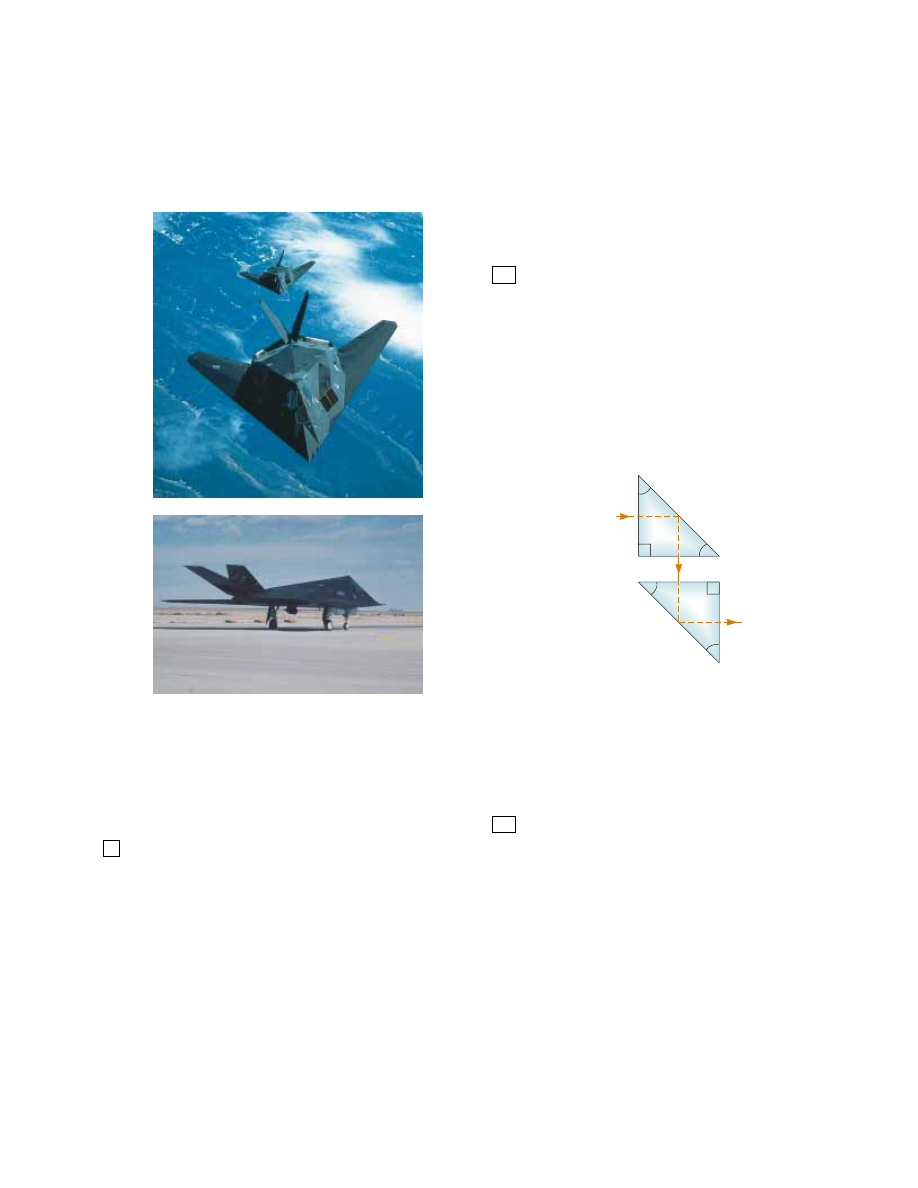Physics For Scientists And Engineers 6E - part 280

Questions
1117
7. Sound waves have much in common with light waves,
including the properties of reflection and refraction. Give
examples of these phenomena for sound waves.
8. Does a light ray traveling from one medium into another
always bend toward the normal, as shown in Figure 35.10a?
Explain.
As light travels from one medium to another, does the
wavelength of the light change? Does the frequency
change? Does the speed change? Explain.
10. A laser beam passing through a nonhomogeneous sugar
solution follows a curved path. Explain.
11. A laser beam with vacuum wavelength 632.8 nm is incident
from air onto a block of Lucite as shown in Figure 35.10b.
The line of sight of the photograph is perpendicular to the
plane in which the light moves. Find the speed, frequency,
and wavelength of the light in the Lucite.
12. Suppose blue light were used instead of red light in the
experiment shown in Figure 35.10b. Would the refracted
beam be bent at a larger or smaller angle?
9.
13. The level of water in a clear, colorless glass is easily
observed with the naked eye. The level of liquid helium in
a clear glass vessel is extremely difficult to see with the
naked eye. Explain.
14. In Example 35.6 we saw that light entering a slab with
parallel sides will emerge offset, but still parallel to the
incoming beam. Our assumption was that the index of
refraction of the material did not vary with wavelength. If
the slab were made of crown glass (see Fig. 35.20), what
would the outgoing beam look like?
Explain why a diamond sparkles more than a glass crystal
of the same shape and size.
16. Explain why an oar partially in the water appears bent.
17. Total internal reflection is applied in the periscope of a
submarine to let the user “see around corners.” In this
device, two prisms are arranged as shown in Figure
Q35.17, so that an incident beam of light follows the path
shown. Parallel tilted silvered mirrors could be used, but
glass prisms with no silvered surfaces give higher light
throughput. Propose a reason for the higher efficiency.
15.
Figure Q35.6
Courtesy of U.S. Air Force, Langley Air Force Base
45
°
45
°
45
°
45
°
90
°
90
°
Figure Q35.17
18. Under certain circumstances, sound can be heard over
extremely great distances. This frequently happens over a
body of water, where the air near the water surface is
cooler than the air higher up. Explain how the refraction
of sound waves in such a situation could increase the
distance over which the sound can be heard.
When two colors of light (X and Y) are sent through a
glass prism, X is bent more than Y. Which color travels
more slowly in the prism?
20. Retroreflection by transparent spheres, mentioned in
Section 35.4 in the text, can be observed with dewdrops.
To do so, look at the shadow of your head where it falls on
dewy grass. Compare your observations to the reactions of
two other people: The Renaissance artist Benvenuto
Cellini described the phenomenon and his reaction in his
Autobiography, at the end of Part One. The American
philosopher Henry David Thoreau did the same in Walden,
“Baker Farm,” paragraph two. Try to find a person you
know who has seen the halo—what did they think?
21. Why does the arc of a rainbow appear with red on top and
violet on the bottom?
19.
6. The F-117A stealth fighter (Figure Q35.6) is specifically
designed to be a non-retroreflector of radar. What aspects
of its design help accomplish this? Suggestion: Answer the
previous question as preparation for this one. Note that
the bottom of the plane is flat and that all of the flat
exterior panels meet at odd angles.